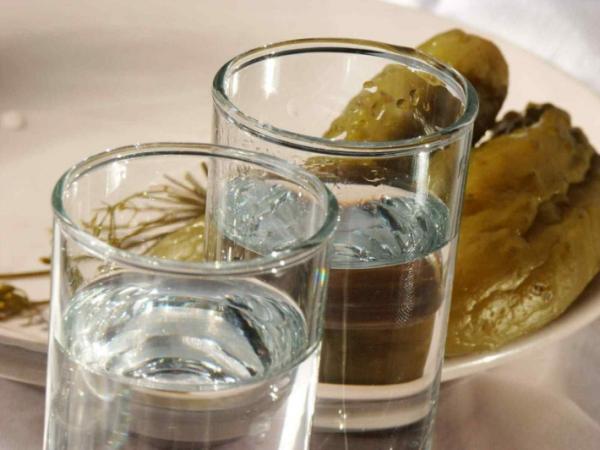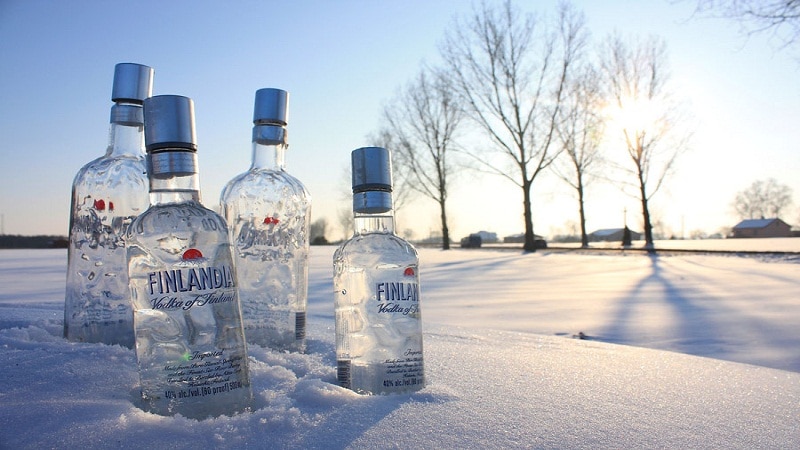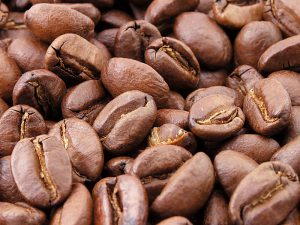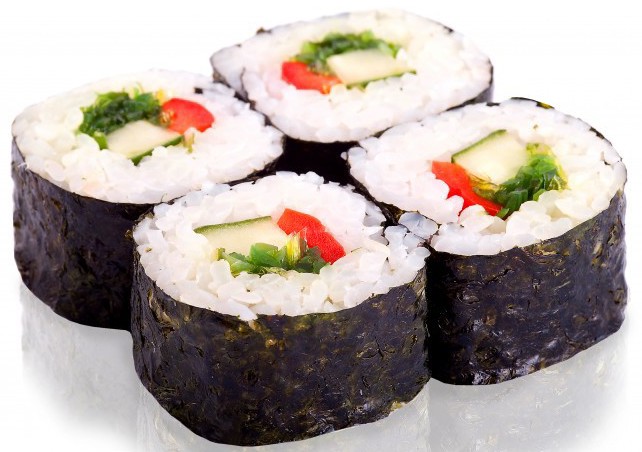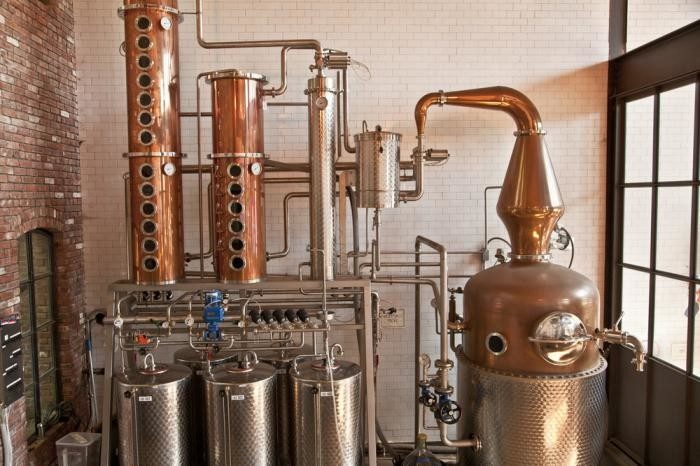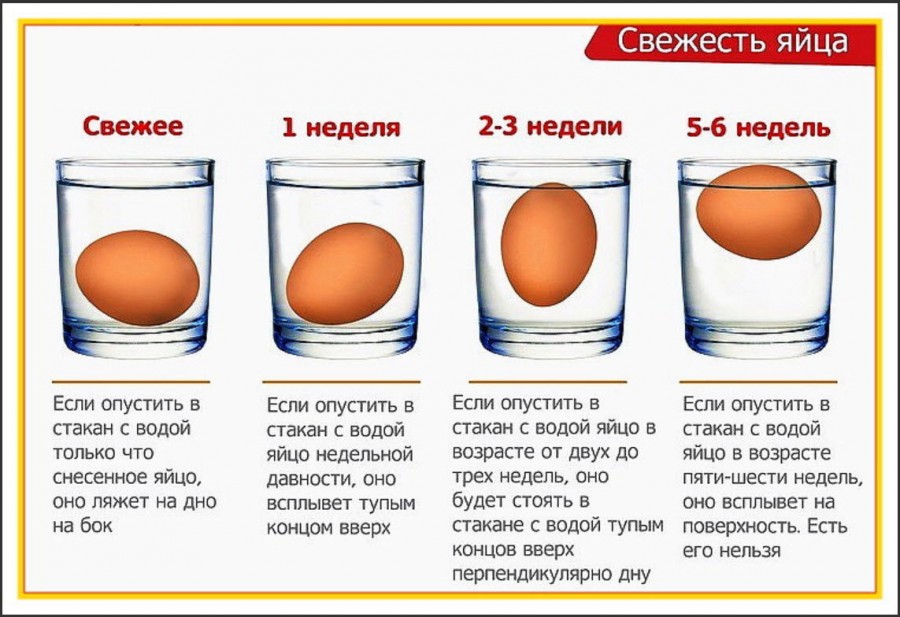Why is an apple getting dark? We answer the questions. Why does the apple darken on the cut
Many people believe that this is due to the fact that oxygen from the air oxidizes the iron found in apples. Therefore, it is believed that if the apple after cutting does not darken or darken slightly, then the apple contains little iron.
No one thought about how much iron there is in an apple. An apple weighing 100 g contains about 1 to 2 milligrams of iron - a microscopic amount that is completely insufficient to be so clearly visible on a slice. Therefore, by the way, it makes no sense to replenish iron deficiency in the body with apples, especially when you consider that of this scanty amount, the body absorbs only 1-5%.
In fact, the mechanism for darkening apples is completely different.
Berries and fruits are known to be rich in antioxidants. Substances of the antioxidant group are called polyphenols. With the help of them, the apple slice is just protected from oxidation by air. But in addition to polyphenols, apples also contain polyphenol oxidase enzymes, they just oxidize polyphenols.
When the integrity of the apple is damaged, quinones are formed as a result of interaction with polyphenols with oxygen. By themselves, they are colorless, but unlike polyphenols, which by their nature inhibit oxidation reactions, quinones are, on the contrary, the strongest oxidizing agents. They start the oxidation process, which gives the apple a rusty color.
What about citric acid? After all, everyone also knows that if you pour a slice of an apple with the juice of any citrus, then the apple will not darken for a long time. The secret lies in the fact that with an increase in acidity (with a decrease in pH), the activity of polyphenol oxidases decreases and the process stops, slows down, but continues anyway.
The rate of formation of a brown film and the intensity of its color is determined by the number of polyphenols in this variety of apples. Sweet apples darken faster than sour ones, and there is also an explanation for this. Firstly, the composition of the final products (and therefore the nature and intensity of the color) depends on many factors. For example, on acidity, preferably unpainted products are formed in an acidic environment, and colored ones closer to neutral. And secondly, in an acidic environment, polyphenol oxide does not work very well.
Polyphenol oxidation processes only start when an apple is damaged. The apple is thus protected from pests, for example, if the fruit is gnawed by a caterpillar. Quinones, which, being strong oxidizing agents, are toxic to microorganisms and fungi. The brown “film” that forms on the damaged surface of the apple heals the damage and protects its flesh from further penetration of the damage deeper. The same thing happens on the cut of bananas, peaches, unripe walnuts, potatoes, mushrooms.

In addition, the substances that are formed as a result of oxidation processes can greatly spoil the digestion of the caterpillar and make the fruit tasteless to it. Depending on the amount and speed of oxidation of substances in the apple, it can literally be a “sticking together" of insect chewing machines by polymerization. Something similar happens when we eat thorns, bird cherry or unripe persimmons - an unpleasant astringent taste is due to the action of tannins - tannins, which also belong to the class of polyphenols and coagulate proteins on the surface of the tongue and mucous membrane with the formation of large "tasteless" molecules.
Unoxidized polyphenols are beneficial for the body - they strengthen blood vessels, so eating a whole apple is more useful than a cut or grated apple.
Darkening under the action of polyphenol oxidase is not always an undesirable process. In some cases, they resort to it on purpose. For example, fermentation of tea leaves, resulting in black tea, includes, among other things, the oxidation of catechins and other tannins with polyphenol oxidases. The quinones formed during these reactions, in turn, begin to act themselves as strong oxidizing agents and contribute to the formation of aromatic substances in tea.
As a rule, this question is answered this way: due to the fact that oxygen in the air oxidizes the iron found in apples. And although there really is iron in apples, about one to two milligrams falls on one medium-sized fruit. Nevertheless, the “mechanism” of darkening of slices in fruits and vegetables is completely different.
But what really is?
Literally from school, we all know that berries and fruits are rich in antioxidants, which in many respects determine their benefits for our health. For example, apples contain many antioxidant substances called polyphenols. By structure, they are chains of molecules of various phenols that look something like this:

Theaflavin-3-gallate - a plant-derived polyphenol
It is known that phenol - the strongest poison! However, phenol chains are substances that have completely different properties than the original monomer. And, first of all, polyphenols are not toxic to humans. In addition, apples contain enzymes polyphenol oxidase whose task, as their name implies, is to oxidize the polyphenols. As a result of polyphenol oxidation processes, substances with new properties are formed - quinones .

By themselves, they are colorless, but unlike polyphenols, which by their nature inhibit oxidation reactions, quinones, on the contrary, are the strongest oxidizing agents that, formed on the surface of an apple slice, begin to interact with everything that comes in their way. As a result, substances are formed that give the apple a "rusty" color.
Why don't apples “rust” from the inside?
The thing is that the interaction of polyphenol oxidase with polyphenols requires oxygen. When the integrity of the apple is damaged, oxygen gains access to the scene and starts these processes. And if you treat an apple slice with citric acid, you can slow down its darkening. The secret lies in the fact that with an increase in acidity (with a decrease pH) decreases the activity of polyphenol oxidase enzymes.

What is the biological meaning of all this?
The apple is thus protected from pests. The processes of oxidation of polyphenols, as you noticed, are launched only when the apple is damaged. In nature, this happens, for example, if the fruit is gnawed by a caterpillar. The first in the list of "protectors" of the apple are the quinones themselves, which, being strong oxidizing agents, toxic to microorganisms and fungi.
The brown “film” that forms on the damaged surface of the apple heals the damage and protects its flesh from penetrating the damage deeper. And finally, the protective role is played by substances that are formed as a result of oxidation processes. Some of them can greatly spoil the digestion of the caterpillar, while others can make the fruit tasteless to it. Something similar happens when we eat thorns, bird cherry or unripe persimmons - their unpleasant astringent effect is due to the action of tannins tannins, which also belong to the class of polyphenols. These compounds bind proteins on the surface of the tongue and mucosa to form an unpleasant sense of numbness in the taste buds.
The rate of formation of a brown film and the intensity of its color is determined by the number of polyphenols in this variety of apples. The same mechanism has a darkening on the cut of bananas, peaches, unripe walnuts, potatoes, mushrooms. Browning the pulp of an apple on a slice gives it a not-so-appetizing look. Therefore, scientists have long wondered how to avoid this. Varieties of apples have already been bred, in which the surface of the cut apple does not darken. This was achieved by blocking the genes responsible for the synthesis of polyphenol oxidase enzymes.

Arctic apples, bred by Canadian experts,
outwardly no different from ordinary apples, except that they do not darken at the cut
Do you know that ...
Darkening under the action of the polyphenol oxidase enzyme is not always an undesirable process. In some cases, they resort to it on purpose. For example, fermentation of tea leaves, resulting in black tea, includes, among other things, the oxidation of catechins and other tannins with polyphenol oxidases. The quinones formed during these reactions, in turn, begin to act themselves as strong oxidizing agents and contribute to the formation of aromatic substances in tea.
In animals and humans, polyphenol oxidase (tyrosinase) oxidizes the amino acid tyrosine with the formation of coloring pigments - melanins, which are responsible for hair color, iris and tanning of the skin.
Why do apples darken at the cut? As a rule, this question is answered this way: due to the fact that oxygen in the air oxidizes the iron found in apples. It is often added at the same time that if the apple after cutting does not darken or there is little "rust" on the cut, then the apple contains little iron. And what if you pour an apple slice with lemon juice, then the apple will not darken for a long time, because citric acid will bind iron ions.
It sounds convincing and believable. And yet, all this is completely untrue.
There really is iron in apples. One apple weighing 100 g contains about 1-2 milligrams of iron - a microscopic amount, completely insufficient to spoil the presentation of the whole fruit. Therefore, by the way, it makes no sense to treat iron deficiency in the body with apples, especially when you consider that from this scanty amount, the body absorbs only 1-5%.
In fact, the mechanism for darkening apples is completely different.
It is known that berries and fruits are rich in antioxidants, which in many respects determine their benefits for our health. In apples, there are many substances in the antioxidant group called polyphenols. By structure, they are chains of molecules of various phenols that look something like this:
Theaflavin-3-gallate - a plant-derived polyphenol
(It is known that phenol is the strongest poison, but phenol chains are substances that have completely different properties and are not toxic to humans at all).
In addition, apples contain polyphenol oxidase enzymes, the task of which, as their name implies, is to oxidize polyphenols.
As a result of the oxidation of polyphenols, quinones are formed. By themselves, they are colorless, but unlike polyphenols, which by their nature inhibit oxidation reactions, quinones, on the contrary, are the strongest oxidizing agents that, formed on the surface of an apple slice, begin to interact with everything that comes in their way. As a result, substances are formed that give the apple a rusty color.
Why doesn't the pulp of a whole apple “rust”? The trick here is that oxygen is required to react polyphenol oxidase with polyphenols. When the integrity of the apple is damaged, oxygen gains access to the scene and starts these processes.
If you treat an apple slice with citric acid, you can slow down its darkening. The secret lies in the fact that with an increase in acidity (chemists say: with a decrease in pH) the activity of polyphenol oxidases decreases.
Why is all this necessary and what is the point?
The apple is thus protected from pests. The processes of oxidation of polyphenols, as you noticed, are launched only when the apple is damaged. In nature, this happens, for example, if the fruit is gnawed by a caterpillar. The first in the list of "protectors" of the apple are the quinones themselves, which, being strong oxidizing agents, are toxic to microorganisms and fungi. The brown “film” that forms on the damaged surface of the apple heals the damage and protects its flesh from penetrating the damage deeper. And finally, the protective role is played by substances that are formed as a result of oxidation processes. Some of them can greatly spoil the digestion of the caterpillar, while others can make the fruit tasteless to it. Something similar happens when we eat thorns, bird cherry or unripe persimmons - their unpleasant astringent effect is due to the action of tannins tannins, which also belong to the class of polyphenols and coagulate proteins on the surface of the tongue and mucous membrane with the formation of large "tasteless" molecules.
The rate of formation of a brown film and the intensity of its color is determined by the number of polyphenols in this variety of apples.
The same mechanism has a darkening on the cut of bananas, peaches, unripe walnuts, potatoes, mushrooms.
Browning the pulp of an apple on a slice gives it a not-so-appetizing look. Therefore, scientists have long wondered how to avoid this. Varieties of apples have already been bred, in which the surface of the cut apple does not darken. This was achieved by blocking the genes responsible for the synthesis of polyphenol oxidases.

Arctic apples, bred by Canadian experts,
outwardly no different from ordinary apples, except that they do not darken at the cut
By the way ...
Darkening under the action of polyphenol oxidase is not always an undesirable process. In some cases, they resort to it on purpose. For example, fermentation of tea leaves, resulting in black tea, includes, among other things, the oxidation of catechins and other tannins with polyphenol oxidases. The quinones formed during these reactions, in turn, begin to act themselves as strong oxidizing agents and contribute to the formation of aromatic substances in tea.
In animals and humans, polyphenol oxidase (tyrosinase) oxidizes the amino acid tyrosine with the formation of coloring pigments - melanins, which are responsible for the color of hair, iris, skin.
Use lemon juice. Apples turn brown, because the enzyme contained in them reacts with oxygen in the air. This process is called oxidation. Lemon juice can prevent oxidation because it contains citric acid, which is an effective antioxidant. You can use freshly squeezed or canned lemon juice. It is best to use this method only on sweet types of apples, because lemon juice will add astringency. You can apply lemon juice to protect apples from oxidation in two ways:
Use salt. Salt is a natural preservative and can effectively protect apples from oxidation. Make a solution at the rate of 1/2 teaspoon of salt per liter of cold water. Place the chopped apples in the solution and let them soak for 3-5 minutes. Remove from water and rinse thoroughly with a colander or sieve. Pieces will not be oxidized for some time.
- Do not worry that the fruit may taste salty, if you do not use too much salt, do not soak the apple for too long and wash it thoroughly later, the taste of the fruit will not change.
Use carbonated drinks. Carbonated drinks containing citric acid can also prevent apples from darkening. Lemon or lime flavored drinks, as well as ginger ale, are the most popular options for soaking apple slices.
Use a fruit freshener. This is a powder mixture of citric and ascorbic acid, which is specifically designed to prevent fruits from darkening. The manufacturer claims that the product will protect the fruit for up to 8 hours. You can find powder in the canned foods department at most grocery stores.
Blanch apples. Pieces of apples can be blanched to prevent darkening. Blanching disables the enzymes in the apple and prevents the reaction with oxygen in the air. Just put the apples in a pot of boiling water for about 5 minutes, and then remove and rinse with cold water.
Wrap in plastic wrap. This is a very simple way to prevent apples from oxidizing; just wrap the cut piece in plastic wrap. This method helps, since the film protects the apple from air penetration, and therefore, from oxidation. Try to wrap the apple as tightly as possible, without creases on the plastic film where it is in contact with the cut on the fruit.
- This method is best used with half an apple, not slices, since it will be easier for you to wrap one piece of film.
- Remember, if air remains under the film, the apple will begin to oxidize. Since it is quite difficult to completely remove air from under the film, this method is not the most effective.
When we cut an apple or peel it, it darkens. This process is triggered by the presence in the fruit of an enzyme called polyphenolic oxidase (ascorbic acid oxidase). This enzyme causes darkening in the interaction of oxygen and the tannin substance found in apples.
Why does the apple darken on the cut: the answer to the question
When the fruit is cut, the cells that are directly on the cut immediately begin to interact with oxygen. Ascorbic acid oxidase causes a change in the surface color of an apple when exposed to oxygen.
The fruit turns brown when exposed to air due to the oxidation process. The peel of the apple protects it from the oxidation process. But as soon as you make an incision on the fruit, its flesh immediately begins to oxidize and after a few minutes the apple darkens.
It is interesting to know that the temperature regime affects the oxidation rate. For example, if you put the peeled apple in the refrigerator, it will darken only after a few hours or even after a day. If you put the fruit in a hot oven, it will turn brown in a few minutes.
By the way, acidic varieties darken faster than sweet ones. This is due to the fact that they have more oxidase enzyme. For example, the Granny Smith variety retains a light shade on the cut longer than other varieties.
To prevent apples from darkening when slicing: life hack
If you need to cook fruit slices, you are probably interested in the question of how to prevent darkening and make sure that the apple retains a beautiful color and a juicy look.
Vitamin C comes to your rescue It is found in citrus juice. Just brush an apple slice with orange or lemon juice. Vitamin C prevents the interaction of tannin with oxygen, thus preventing darkening. Keep in mind that when spraying citrus juice, the apple will be sour.
 If you do not want the apples to be sour, sugar syrup will save them from darkening. We cook it according to the standard recipe,
then dip in syrup or grease the cut slice with it. This method not only protects against darkening, but also gives the fruit a sweet taste.
If you do not want the apples to be sour, sugar syrup will save them from darkening. We cook it according to the standard recipe,
then dip in syrup or grease the cut slice with it. This method not only protects against darkening, but also gives the fruit a sweet taste.
If at hand there is no citrus juice or sugar syrup, citric acid will come to the rescue. Add 1/4 tsp to cold water. citric acid stir it until dissolved, then immerse the fruit for 10 minutes.
Sweet soda - it contains sugar and citric acid, they will prevent oxidation processes. Just sprinkle a slice of fruit with sweet soda; you don’t need to do anything else.
If you take an apple with you

This method is suitable for those cases when you need to take a whole sliced \u200b\u200bapple on a trip, to work or study . We cut it into two halves and take out the core, then fold them together again and pull them together with stationery. Packed in a bag.
Now you know why the apple cut darkens. If you want to preserve its freshness and beauty, use our simple life hacks.
